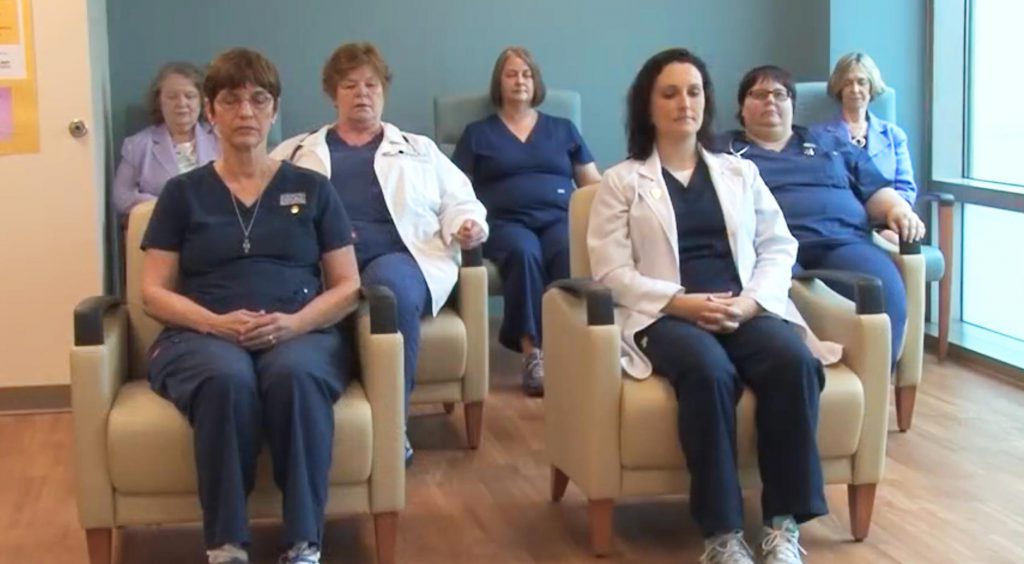Finding the Sacred in the TM Experience

Excerpted from a post on the blog of TM for Women in Canada
During the 1970’s, Amedeo Giorgi developed an innovative qualitative research method known as descriptive phenomenological research. Referred to as the Giorgi method, this approach aims to reveal the meaning of persons’ lived experiences by identifying essential themes expressed in their language.
This kind of analysis offers a new depth to understanding human behavior and experiences.
Using the Giorgi method in TM research
Researchers Joyce Perkins and Catherine Aquino-Russell used the Giorgi method to examine the impact of the practice of Transcendental Meditation (TM) on graduate nursing students earning a Doctor of Nursing Practice (DNP) degree while working and raising families.
The question guiding this research was, “What is the meaning of the lived experience of graduate nursing students practicing the TM technique?”
The students learned TM and then were asked to record in a journal once per week their responses to the prompt: “Please describe what it is like for you to practice the Transcendental Meditation technique twice per day while engaged in your graduate nursing teaching–learning journey.”
The authors reported the results of their research in the article Graduate Nurses Experience the Sacred During Transcendental Meditation®, published in the International Journal of Human Caring.
Perkins and Aquino-Russell (2017) reported, “the students found themselves authentically present and balanced with enhanced job performance. Feelings of bliss, peacefulness, and integrity potentiated the experience of sacred space amid daily stressors while care, compassion, grace, gratitude, and appreciation resided within.”
Interestingly, the authors did not set out to see if TM would develop a sense of the sacred; instead, the unique experience revealed itself in the students’ words, gathered through weekly journaling and through the qualitative analysis of their words.
How TM works and why it can bring a sense of the sacred
TM allows the mind to experience a state of restful alertness. In this state, the mind becomes settled and relaxed, while remaining awake and alert….
Perkins elaborates that the experience of transcending during TM carries the experience of expanded awareness, a sense of unboundedness, and a feeling of love and compassion…. This expanded awareness and experience of love and compassion are what give rise to the sacred experience.
A deeper look at the nurses’ lived experience of the sacred as a result of practicing TM
The word ‘sacred’ has various meanings, but one definition offered in Merriam-Webster’s dictionary is “highly valuable or important.” Aquino-Russell noted this experience of the sacred developed very quickly—within just a few months.
The students also found themselves more psychologically as well as physically present in their activities. They felt a deeper connection to their patients, family members, and colleagues….
This expanded feeling in the nurses of the sacred and of being connected came hand-in-hand with a change in perspective on how to do their job, shifting from being primarily task-oriented to being more people-oriented—more relationship-focused. They felt more clarity of thought and could tap into their innate wisdom, Perkins commented, like “riding on a wave or being assisted by the whole universe.”
….Feeling a sense of the sacred—feeling that one’s role and relationship with patients and colleagues is highly valuable—requires more than just knowing the steps involved to execute a task, more than just thinking linearly and rationally.
Perkins and Aquino-Russell noted that as a result of TM practice, the nursing students had access to another level of information. This level included “all the emotions, belief systems, and felt space we all participate in and is always present. It creates a sense of universal participation in the moment and a sense of flow–an effortless effort.” In short, the nurses felt they were working in a “larger shared space that is sacred.”
In the conclusion of their article, the authors wrote:
“When practicing this simple technique, participants found themselves authentically present. Feelings of bliss, peacefulness, and integrity potentiated the experience of sacred space amid daily stressors, while care, compassion, grace, gratitude, and appreciation resided within. We recommend that nursing students practice this type of meditation to experience their highest possible level of consciousness, care, compassion, and performance in nursing and in life.”
Note: This post is based upon a conversation with nursing researchers Joyce B. Perkins, PhD, BS, MA, MS, RN, AHN-BC, CHTP, RMP-T, SGAHN, St. Catherine University, St. Paul, Minnesota, USA and Catherine Aquino-Russell, PhD, BScN, MN, RN, University of New Brunswick. Click here to hear that conversation.
Ready to learn TM?
About the Author
Helen Creighton is the national director of TM for Women in Canada.
More Posts by Helen
- Avoid Burnout and Meet Your Challenges
- Stress, Meditation and Hans Selye: An Ancient Solution to a Modern Problem
- The Wealth and Happiness of Nations
- Wealth, Well-Being and the Transcendental Meditation Technique: An Interview with Money Coach Karin Mizgala
- A Writer’s Perspective: An Interview with Sasha Parmasad





